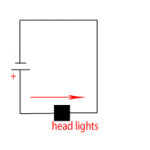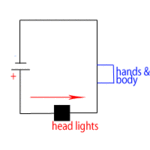STS4
Newbie level 6
Hi guys,
I am having a really hard time understanding chassis ground, best illustrated by the example of a car's electrical system:
The negative terminal of the car's battery is connected to the chassis to provide return path for all current of all the loads.
So basically, the chassis of the car is a conductor and when the car is started - it becomes a conductor that is part of a closed circuit. If this is the case, why don't you get shocked if you open the hood while standing barefoot on the ground?!? Or if you are wearing shoes - don't you become just another "load" in this closed circuit?
What am I missing here?
I am having a really hard time understanding chassis ground, best illustrated by the example of a car's electrical system:
The negative terminal of the car's battery is connected to the chassis to provide return path for all current of all the loads.
So basically, the chassis of the car is a conductor and when the car is started - it becomes a conductor that is part of a closed circuit. If this is the case, why don't you get shocked if you open the hood while standing barefoot on the ground?!? Or if you are wearing shoes - don't you become just another "load" in this closed circuit?
What am I missing here?

